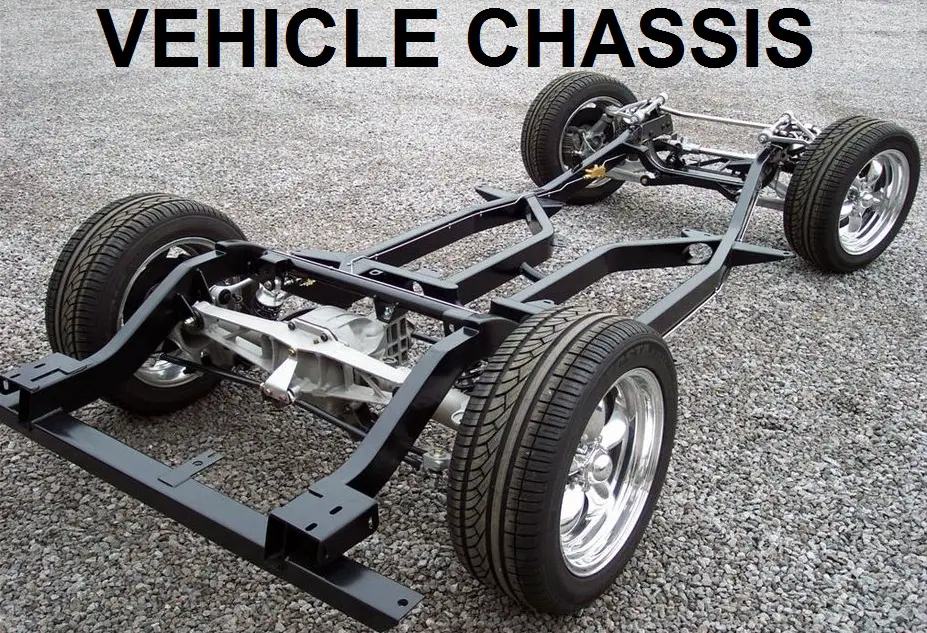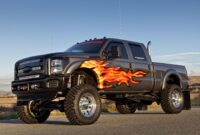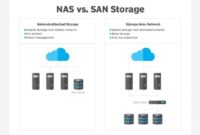Chassis Cab Trucks For Sale: Your Ultimate Guide to Tailored Transportation Solutions sale.truckstrend.com
In the world of commercial vehicles, few options offer the unparalleled versatility and customization potential of a chassis cab truck. Unlike a standard pickup or a pre-configured commercial vehicle, a chassis cab arrives from the factory as a blank slate: a robust frame, engine, cab, and drivetrain, but notably, no rear body. This unique design empowers businesses and individuals to build precisely the vehicle they need, transforming a base platform into a highly specialized tool for an endless array of applications.
For sale, chassis cab trucks represent not just a purchase, but an investment in efficiency, functionality, and tailor-made solutions. Whether you’re a contractor needing a dump truck, a utility company requiring a service body, an emergency service demanding an ambulance, or a delivery business looking for a box truck, the journey often begins with a chassis cab. This comprehensive guide will navigate the intricacies of chassis cab trucks for sale, providing essential insights to help you make an informed decision.
Chassis Cab Trucks For Sale: Your Ultimate Guide to Tailored Transportation Solutions
What Exactly is a Chassis Cab Truck?
At its core, a chassis cab truck is a vehicle designed to be customized. It consists of the chassis (the foundational frame), the engine, the transmission, the axles, the wheels, and the driver’s cab. What’s missing is the rear-body component – the truck bed, cargo box, or specialized equipment. This "incomplete" vehicle is then sent to an upfitter, a company that specializes in installing custom bodies and equipment tailored to the end-user’s specific requirements.
The robust, heavy-duty frame of a chassis cab is engineered to handle significant loads and the stresses of specialized equipment. Manufacturers offer various frame lengths, Gross Vehicle Weight Ratings (GVWRs), and cab-to-axle (CA) measurements to accommodate a wide range of upfits, from simple flatbeds to complex cranes or rescue apparatus.
Why Choose a Chassis Cab? The Unmatched Versatility
The primary advantage of a chassis cab truck lies in its inherent adaptability. Here’s why businesses and individuals opt for them:
- Ultimate Customization: This is the flagship benefit. You’re not limited to off-the-shelf solutions. A chassis cab allows for the exact body type, storage configuration, power take-off (PTO) capabilities, and specialized equipment needed for your unique operation.
- Cost-Effectiveness (for specific needs): While the initial combined cost of a chassis and upfit might seem high, it can be more cost-effective than trying to modify a standard truck or purchasing a pre-built specialty vehicle that doesn’t perfectly fit your needs. You pay only for the components and features you require.
- Optimized Performance: By matching the chassis’s GVWR, engine, and drivetrain to the specific weight and operational demands of the upfit, you ensure optimal performance, fuel efficiency, and longevity.
- Enhanced Payload Capacity: Chassis cabs are typically built with stronger frames and suspensions than consumer-grade pickups, offering superior payload and towing capacities crucial for commercial applications.
- Longevity and Durability: Designed for rigorous commercial use, chassis cabs are built to withstand demanding work environments, often leading to a longer service life and better return on investment.

Key Considerations When Buying a Chassis Cab

Purchasing a chassis cab is a strategic decision that requires careful planning. Here are the critical factors to consider:
- Application and Intended Use: This is the most crucial starting point. What will the truck primarily be used for? Hauling materials, transporting equipment, providing mobile services, or something else entirely? Your answer dictates everything from GVWR to engine choice.
- Gross Vehicle Weight Rating (GVWR) & Payload Capacity: The GVWR is the maximum permissible weight of the vehicle and its contents (including the body, cargo, passengers, and fuel). Ensure the chassis’s GVWR and payload capacity significantly exceed the total weight of your planned upfit and typical cargo.
- Engine and Drivetrain:

- Gasoline vs. Diesel: Gasoline engines are often cheaper upfront and for maintenance, suitable for lighter loads or less frequent heavy-duty work. Diesel engines offer superior torque, fuel efficiency under heavy loads, and durability, making them ideal for constant heavy hauling and high mileage.
- 2WD vs. 4WD: Two-wheel drive (2WD) is sufficient for paved roads and lighter duties. Four-wheel drive (4WD) is essential for off-road conditions, construction sites, or adverse weather.
- Transmission: Automatic transmissions are common for ease of use, while manual options might be preferred for specific heavy-duty applications.
- Cab Configuration:
- Regular Cab: Single row of seating, maximizing frame length for body upfits.
- Extended Cab (SuperCab/Quad Cab): Offers limited rear seating or storage space.
- Crew Cab (SuperCrew/Mega Cab): Full rear seating, ideal for crews or larger teams, but reduces available frame length.
- Wheelbase & Cab-to-Axle (CA) Measurement: These dimensions are critical for ensuring the selected upfit body fits correctly. The CA measurement (distance from the back of the cab to the center of the rear axle) must match the upfit manufacturer’s specifications.
- Upfit Compatibility: Research which chassis models are best suited for your desired upfit. Some manufacturers offer specific packages or pre-drilled frames to facilitate common upfits. Consult with your chosen upfitter early in the process.
- New vs. Used:
- New Chassis Cabs: Offer the latest technology, full warranties, and no prior wear and tear. Ideal if you need specific, current features or plan extensive customization.
- Used Chassis Cabs: Can offer significant cost savings, especially if you find one with a low mileage and good maintenance history. Be diligent with inspections and vehicle history reports.
- Budget: Factor in not just the purchase price of the chassis but also the cost of the upfit, registration, insurance, and ongoing maintenance.
Types and Categories of Chassis Cab Trucks
Chassis cab trucks are broadly categorized by their Gross Vehicle Weight Rating (GVWR), which dictates their capabilities and the types of upfits they can support.
- Light-Duty Chassis Cabs (Class 2b/3): These are often based on heavy-duty pickup truck platforms but with a bare frame.
- Examples: Ford F-350/450/550 Super Duty, Ram 3500/4500/5500, Chevrolet Silverado 3500HD/4500HD, GMC Sierra 3500HD/4500HD.
- Typical GVWR: 10,001 – 19,500 lbs.
- Applications: Landscaping trucks, service bodies, smaller dump trucks, flatbeds, small box trucks.
- Medium-Duty Chassis Cabs (Class 4-7): These are purpose-built commercial trucks, distinct from pickup platforms, designed for heavier and more demanding tasks.
- Examples: Ford F-650/F-750, Freightliner M2, International MV, Isuzu N-Series, Hino 195/268.
- Typical GVWR: 14,001 – 33,000 lbs.
- Applications: Larger dump trucks, utility trucks with aerial lifts, refuse trucks, larger box trucks, specialized emergency vehicles, tow trucks.
- Heavy-Duty Chassis Cabs (Class 8): These are the largest and most robust chassis, typically used for tractor-trailer applications or highly specialized, very heavy equipment.
- Examples: Peterbilt, Kenworth, Volvo, Mack, Freightliner (larger models).
- Typical GVWR: 33,001 lbs and above.
- Applications: Fire trucks, concrete mixers, heavy-haul flatbeds, large specialized vocational vehicles.
The Buying Process: A Step-by-Step Guide
- Define Your Needs: Be hyper-specific about the vehicle’s purpose, required payload, operating environment, and crew size.
- Research & Consult: Identify manufacturers and models that fit your GVWR and CA requirements. Simultaneously, consult with upfitters to ensure your desired body can be mounted on your chosen chassis.
- New vs. Used Decision: Based on budget and specific needs, decide whether a new or used chassis cab is more appropriate.
- Obtain Quotes: Get detailed quotes for both the chassis and the upfit. Understand what is included in each.
- Financing: Explore financing options, including commercial loans or leasing, which can offer tax advantages and preserve capital.
- Inspection (Especially Used): For used chassis cabs, a thorough inspection by a qualified mechanic is non-negotiable. Check the frame for cracks or bends, inspect the engine, transmission, brakes, and suspension. Get a vehicle history report.
- Test Drive: If possible, test drive a similar model (even if it has a different body) to assess the engine, transmission, and overall ride quality.
- Finalize Purchase & Upfit: Coordinate between the chassis dealer and the upfitter to ensure a smooth transition from purchase to completed vehicle.
Tips for a Successful Purchase
- Partner with Experts: Work with reputable commercial truck dealerships and experienced upfitters. Their expertise is invaluable in navigating the complexities of chassis and body integration.
- Don’t Overlook the Upfit Cost: The upfit can sometimes cost as much as or even more than the chassis itself. Get a clear, itemized quote.
- Consider Resale Value: Some brands and configurations hold their value better than others.
- Factor in Long-Term Operating Costs: Beyond the purchase, consider fuel efficiency, maintenance costs, and insurance for your chosen model and upfit.
- Understand Warranty: Be clear about what the chassis manufacturer’s warranty covers and what the upfitter’s warranty covers.
Challenges and Solutions
- Challenge: Complexity of Matching Chassis to Upfit.
- Solution: Begin with the upfit in mind. Consult with an upfitter before purchasing the chassis. They can advise on specific chassis requirements (GVWR, CA, frame strength, PTO options) to ensure perfect compatibility.
- Challenge: Higher Initial Outlay Compared to a Standard Truck.
- Solution: Recognize that a chassis cab + upfit is an investment in specialized capability. Explore commercial financing or leasing options to manage cash flow. Focus on the long-term ROI from increased efficiency and reduced downtime.
- Challenge: Finding Specialized Used Models.
- Solution: Broaden your search to national commercial truck marketplaces. Network within your industry. Sometimes, a general-purpose used chassis cab can be acquired and then upfitted, offering a more affordable base.
Price Table: Estimated Chassis Cab Truck Prices (Chassis Only)
Please note: Prices are highly variable based on make, model, year, engine, drivetrain, trim level, optional features, and market conditions (new vs. used). These are estimated ranges for the chassis cab only, excluding the cost of the upfit body.
| Category | Typical GVWR Range (lbs) | Common Manufacturers/Models (Examples) | Estimated New Chassis Price Range ($) | Estimated Used Chassis Price Range ($) | Typical Applications (Upfit Dependent) |
|---|---|---|---|---|---|
| Light-Duty | 10,001 – 19,500 | Ford F-350/450/550, Ram 3500/4500/5500, Chevy/GMC 3500HD/4500HD | $40,000 – $75,000+ | $20,000 – $60,000+ | Service, Landscaping, Smaller Dump, Flatbed, Box, Tow |
| Medium-Duty | 14,001 – 33,000 | Ford F-650/750, Freightliner M2, International MV, Isuzu N-Series, Hino 195/268 | $70,000 – $150,000+ | $35,000 – $100,000+ | Larger Dump, Utility, Refuse, Larger Box, Fire/Rescue, Crane, Delivery |
| Heavy-Duty | 33,001+ | Peterbilt, Kenworth, Volvo, Mack, Freightliner (Class 8 vocational) | $120,000 – $250,000+ | $60,000 – $180,000+ | Heavy Haul, Concrete Mixer, Large Specialized Vocational, Fire Ladder |
Disclaimer: These prices are estimates only and can fluctuate significantly based on market demand, economic conditions, and specific vehicle configurations. Always request detailed quotes from reputable dealers.
Frequently Asked Questions (FAQ)
Q1: What’s the difference between a chassis cab and a regular pickup truck?
A1: A regular pickup truck comes with a factory-installed bed. A chassis cab truck comes with an exposed frame rails behind the cab, ready for a custom body (like a dump body, service body, or box). Chassis cabs are generally built on heavier-duty platforms than consumer pickups.
Q2: Can I drive a chassis cab without an upfit?
A2: While technically drivable, it’s generally not recommended or legal for extended use, as it lacks proper lighting, a rear bumper, and a cargo containment system. It’s designed to be an incomplete vehicle until the body is installed.
Q3: What is an "upfit"?
A3: An "upfit" refers to the process of installing a specialized body or equipment onto the chassis cab. This includes adding dump bodies, service bodies, flatbeds, box truck bodies, utility cranes, snowplows, and more, tailoring the truck for a specific purpose.
Q4: How much does an upfit cost?
A4: Upfit costs vary dramatically depending on the complexity, materials, and specialized equipment. A basic flatbed might cost a few thousand dollars, while a highly specialized utility body with integrated cranes or storage solutions could easily run tens of thousands, or even hundreds of thousands for highly complex builds like ambulances or fire trucks.
Q5: Do I need a special license to drive a chassis cab?
A5: It depends on the Gross Vehicle Weight Rating (GVWR) of the completed vehicle (chassis + upfit + cargo). In the U.S., if the GVWR is 26,001 lbs or more, you typically need a Commercial Driver’s License (CDL). For vehicles under this weight, a standard driver’s license is usually sufficient. Always check your local Department of Motor Vehicles (DMV) regulations.
Q6: Where can I buy chassis cab trucks for sale?
A6: You can find new chassis cabs at authorized commercial truck dealerships (e.g., Ford Commercial, Ram Commercial, Freightliner, International dealers). Used chassis cabs are available through these same dealerships, used commercial truck lots, online marketplaces (like TruckPaper.com, CommercialTruckTrader.com), and sometimes at public auctions.
Q7: Is it cheaper to buy a chassis cab or a finished truck?
A7: For general-purpose hauling (e.g., a standard pickup bed), a finished pickup truck is usually cheaper. However, if you need a specialized function (e.g., a dump truck, a detailed service body, a box truck), buying a chassis cab and custom upfitting it is almost always more cost-effective and provides a better-tailored solution than trying to modify a standard truck or buying a pre-built, less-than-ideal specialized vehicle.
Conclusion
Chassis cab trucks for sale represent the ultimate in commercial vehicle customization. They offer businesses and individuals the unparalleled ability to create a transportation solution precisely engineered for their unique needs, enhancing efficiency, productivity, and profitability. While the purchasing process involves more considerations than a standard vehicle, the rewards of a perfectly tailored workhorse are undeniable.
By carefully evaluating your application, understanding key specifications like GVWR and CA, and partnering with experienced dealerships and upfitters, you can confidently navigate the market for chassis cab trucks. This strategic investment will not only meet your current operational demands but also provide a versatile platform for future growth, empowering your business to move forward with purpose-built power.




